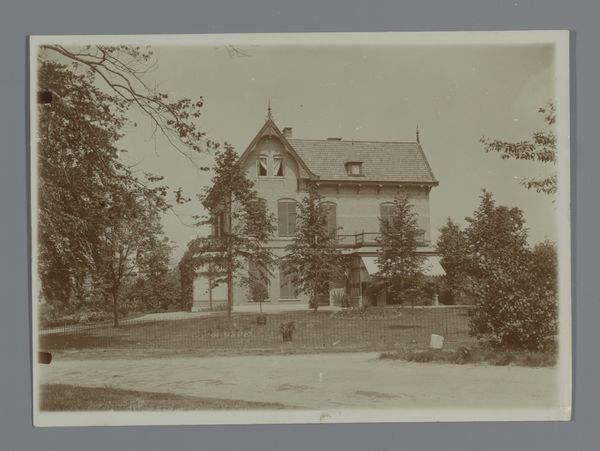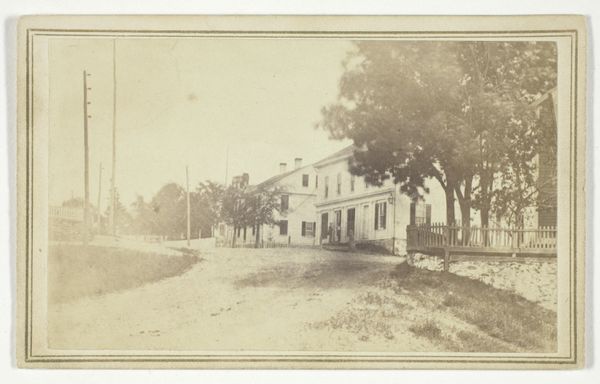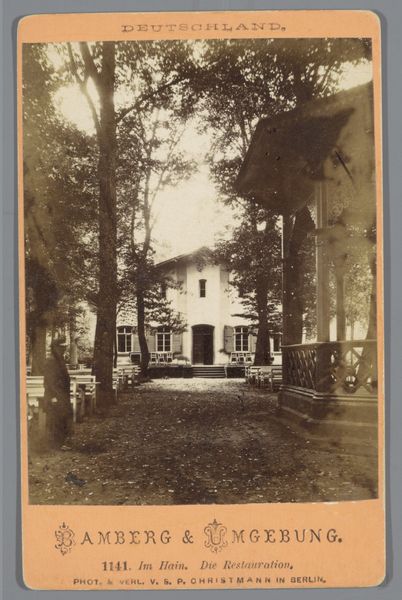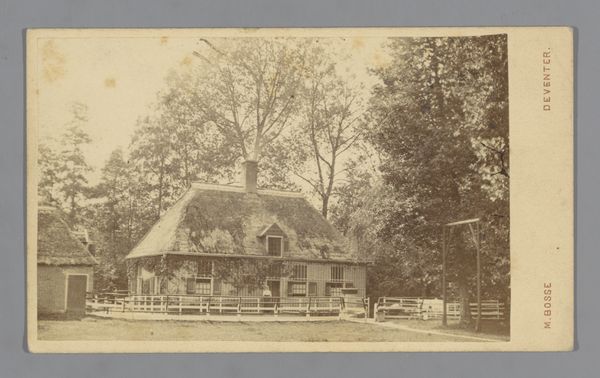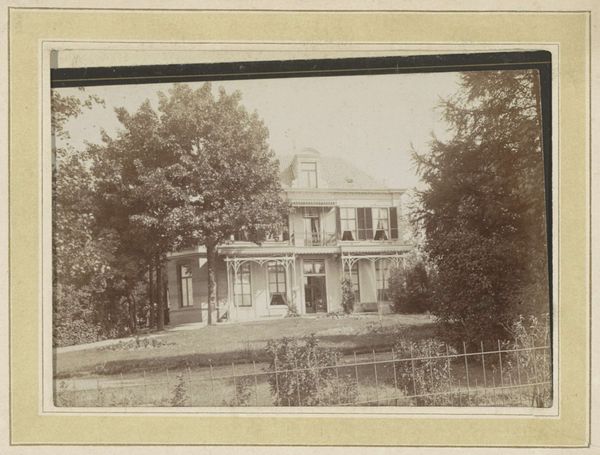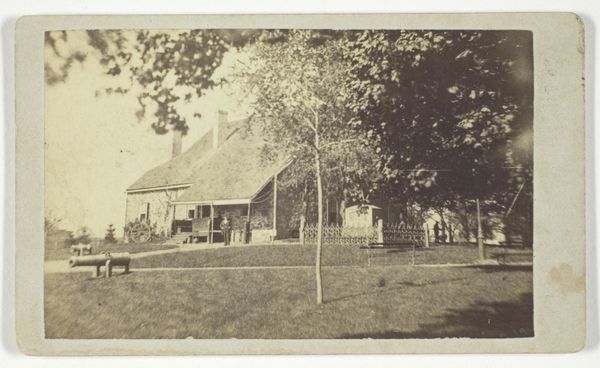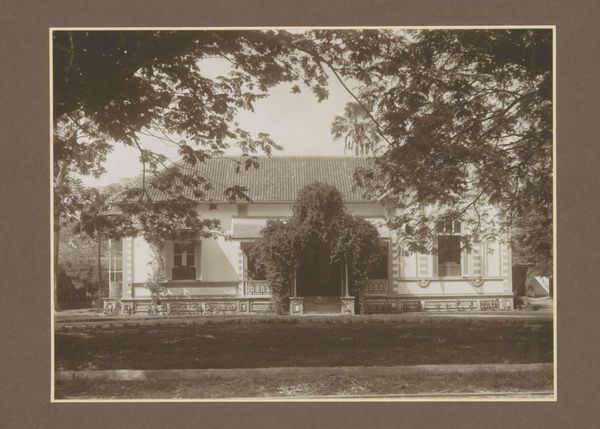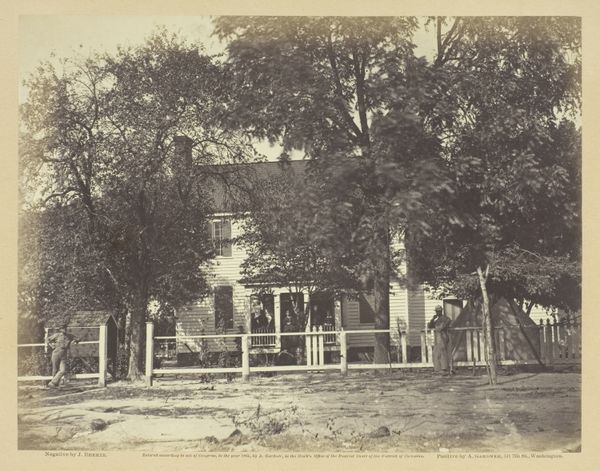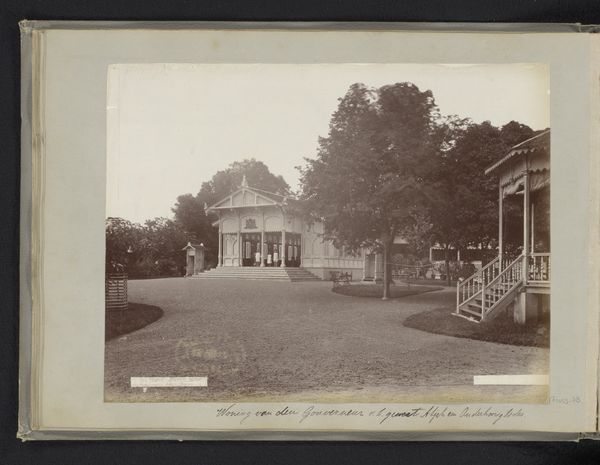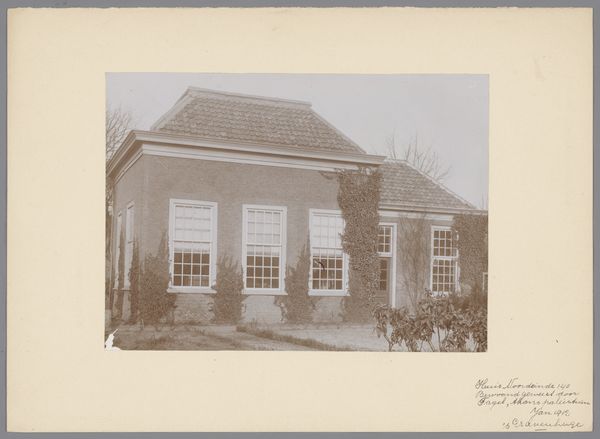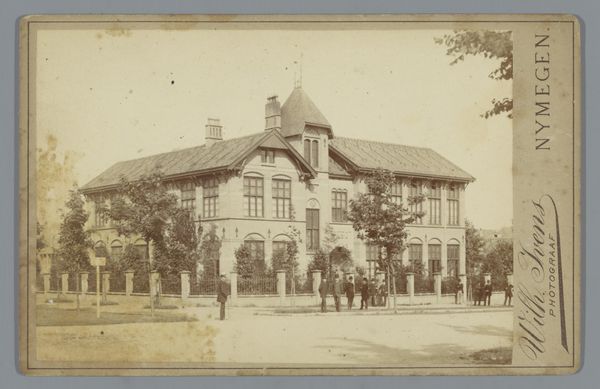
photography
#
landscape
#
photography
#
building
Dimensions: height 97 mm, width 138 mm
Copyright: Rijks Museum: Open Domain
Editor: This photograph, "Exterieur van een landhuis aan de Zwolseweg te Apeldoorn" by A. C. Reelick, taken sometime between 1880 and 1900, showcases a country house amidst a heavily foliaged setting. The sepia tones create a slightly melancholic, nostalgic mood. What do you see in this piece, and how does it speak to its time? Curator: Ah, this is one of those photos that whispers stories rather than shouts them! The way the light dapples through the trees, doesn't it make you feel like you're peering into someone's memory? For me, the photo isn't just about the house. Look at the carefully placed trees; they feel intentional. And, the empty road, or pathway, whatever it might be, adds this element of yearning. Almost like we are waiting for someone, or something. What was life like in Apeldoorn then? Editor: That’s interesting; I hadn’t really considered that. I was more focused on the building itself. The closed shutters make it seem so closed off. Curator: Exactly! Is that just because the residents happened to be out? Or, is there a kind of… unspoken distance there? These early photographs offer a unique window into the past, revealing not only the subject matter but also the values and attitudes of the time. We almost become voyeurs, don't you think? It also suggests a yearning for privacy. Do you agree? Editor: That makes a lot of sense, I'd not considered the photographer's intentions so deeply before. I guess I'll have to look differently from now on. Curator: That’s what's so great about art, isn't it? Every time you look, you see something new. It can speak differently at various times of your life, so remember to revisit and see what new things you pick up. It can also depend on how you are feeling and your mood at that moment. Art is not static and always open to interpretation, which makes it dynamic and engaging! Editor: Thank you, I’ll definitely keep that in mind going forward.
Comments
No comments
Be the first to comment and join the conversation on the ultimate creative platform.

